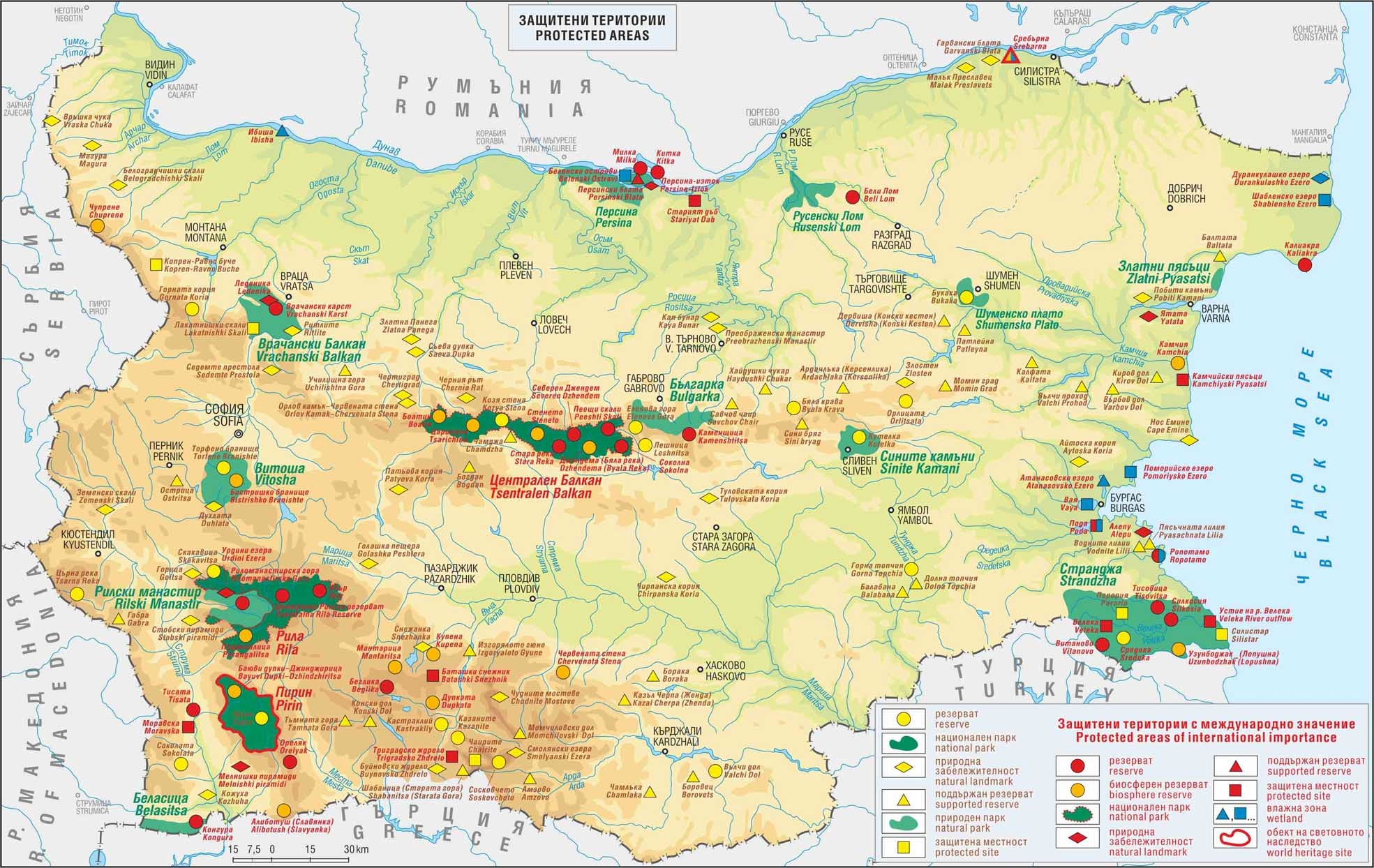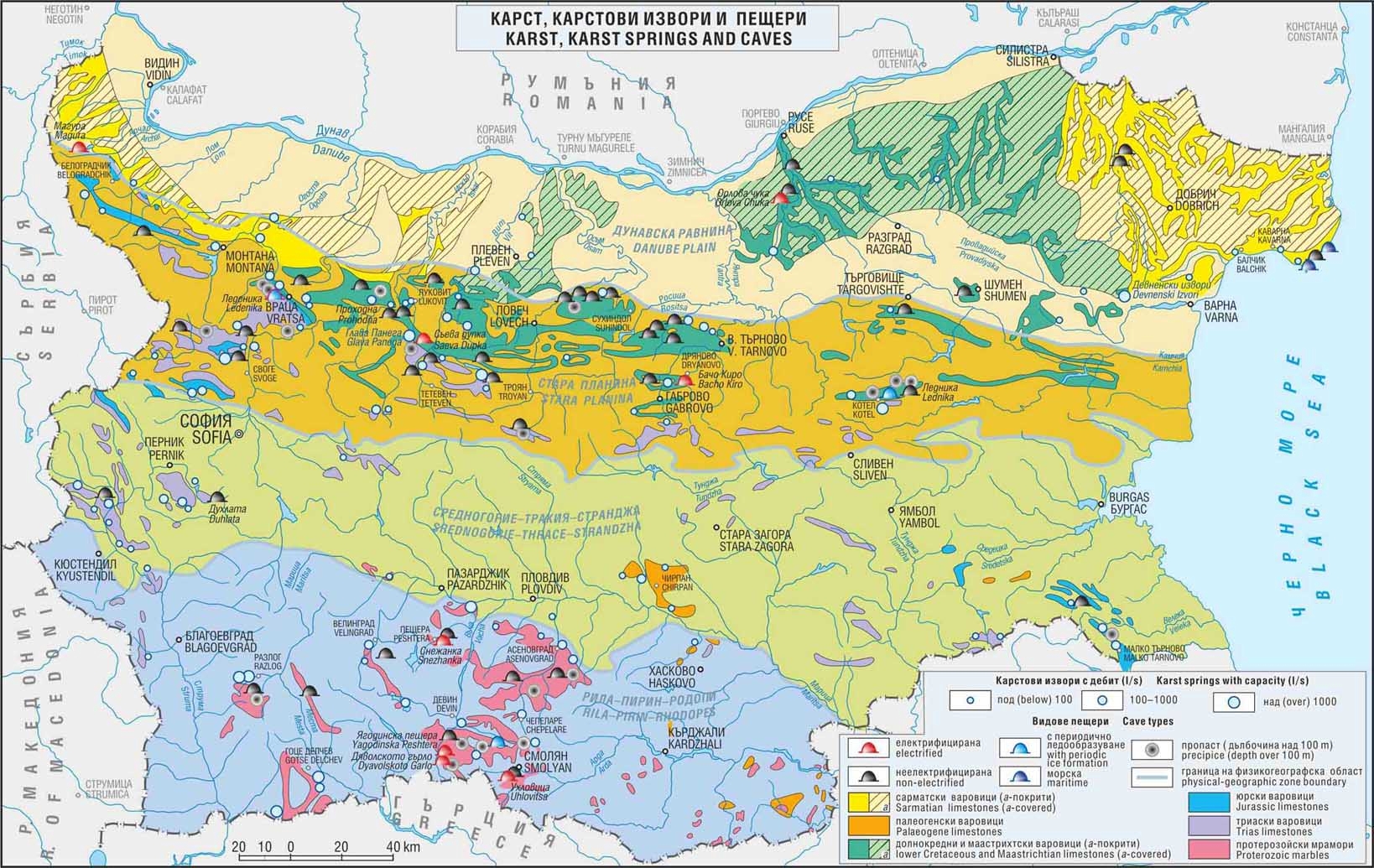
Protected Territories
PROTECTED TERRITORIES IN BULGARIA
Development of the network of protected areas, which has almost 80 years of history. The beginning was on July 23, 1931 with the announcement of the First Bulgarian reserve “Upper Eleshnitsa-Silkosiya” (102.6 ha) in Strandzha Mountain in Southeast Bulgaria. On 27 October 1934 the National park “Vitosha was declared. It was the first National park in Bulgaria and on the Balkan Peninsula, as well as one of the first parks of this type in Europe. In 1936 a Decree-Law was adopted for environmental protection.
According to the classification developed in the Law of protected territories, which is in force now (LPT, 1988), 6 categories of protected territories have been adopted (PT), namely:
- Reserve (R) – 55 with total area of 77 107,43 ha;
- Maintained reserve (MR) – 35 with total area of 4 510,33 ha;
- National Park (NP) – 3 (“Rila”, “Pirin”, “Centarl Balkan” including into their area 15 reserves) with total area of 193 047,9 ha (23,8 % of it is reserve area);
- Natural park (NP) – 11 (“Vitosha”, “Ruse Lom”, “Sinite kamani”, “Shumen Plateau”, “Zlatni pyasatzi”, “Vratza Balkan”, “Strandzha”, “Rila Monastery”, “Persina”, “Balgarka” and “Belassitza”) with total area 218 405,46 ha (including 14 reserves occupying 5.88 % of the park area)’
- Natural landmark (NL) – 355 with total area of 18168,85 ha;
- Protected locality (PL) – 564 with total area of 74052,36 ha.
The total number of protected territories is 1023 and their total area (excluding duplication) is 5 853 km2, which makes about 4.65 % of the territory of Bulgaria.
Also, 1500 individual trees have been placed under protection.
Protected territories of International importance occupy a special position within the classification system, since they have been selected, meeting special international standards adopted by International treaties and agreements, namely: The RAMSAR convention (11 wetlands), the World Heritage Convention (3 natural objects and 7 monuments of culture) and the “Man and Biosphere” Program of the UN Scientific and Cultural Organization (UNESCO) (16 reserves).
The total RAMSAR-included areas occupy 49 912.43 ha (0.45 % of this country’s territory). Of these the Dragoman Marsh is of karst origin and lakes in the “Srebarna” reserve and “Durankulak Lake” protected locality receive karst feeding. All of these areas being Wetlands are also of ornithological importance and have been included into the Corine Site.
In the World Heritage List of UNESCO 3 Bulgarian natural objects have been included (National Park “Pirin”, “Srebarna” Natural Reserve and National Park “Central Balkan” with beech forests in 9 reserves), as well as 7 cultural monuments (the Boyana Church, Kazanlak Tomb, Madara Horseman, Nessebar, Rila Monastery, Thracian tombe and Rock-hewn churches of Ivanovo). Out of them 1 natural object (National Park “Pirin” and 2 cultural ones (the Madara Horseman and Rock-hewn churches of Ivanovo) are closely related to karst. Other 13 sites (5 natural and 8 cultural) in this country meet the high standards of UNESCO and have been included into its Indicative list. Of these karst or prevailing-karst territories are 4 natural sites (“Vratza” karst reserve, Natural Park “Russe Lom”, protected locality of “Pobiti kamani” and Natural Park “Central Balkan”) and 1 cultural site (Magura Cave).
Along the “Man and Biosphere” Program of UNESCO (ÌÀÂ) there are 10 biosphere reserves in Bulgaria, as in 2017 4 of them („Chervenata stena”, „Srebarna”, „Uzunbodzhak” and „Central Balkan“) were designated as modern post-Seville biosphere reserve parks.
In total, over 40 Bulgarian protected territories of various categories (16 % of the total protected lands) are also protected under international conventions and programs. At the same time “Rila” and “Central Balkan” national parks have been registered in the European network of PAN Parks.
Within the EU under two directives (Conservation of wild birds and Habitats of wild fauna and flora, known as Bird Directive and Habitat Directive) the ecological network “Natura 2000” was created in Bulgaria. By Decisions of the Council of Ministers 119 protected areas for birds have been identified (22.7 % of the area of this country) and 233 protected areas for habitat protection (30 %). In total these are 339 protected areas of Natura 2000, covering 34.4 % of the country (the boundaries of the 13 zones along both Directives match).
For actual information:
Register of protected areas in Bulgaria: http://eea.government.bg/zpo/en/index.jsp
Bulgarian Ministry of Environment and Water (MEW):
http://www.moew.government.bg/?show=top&cid=182


